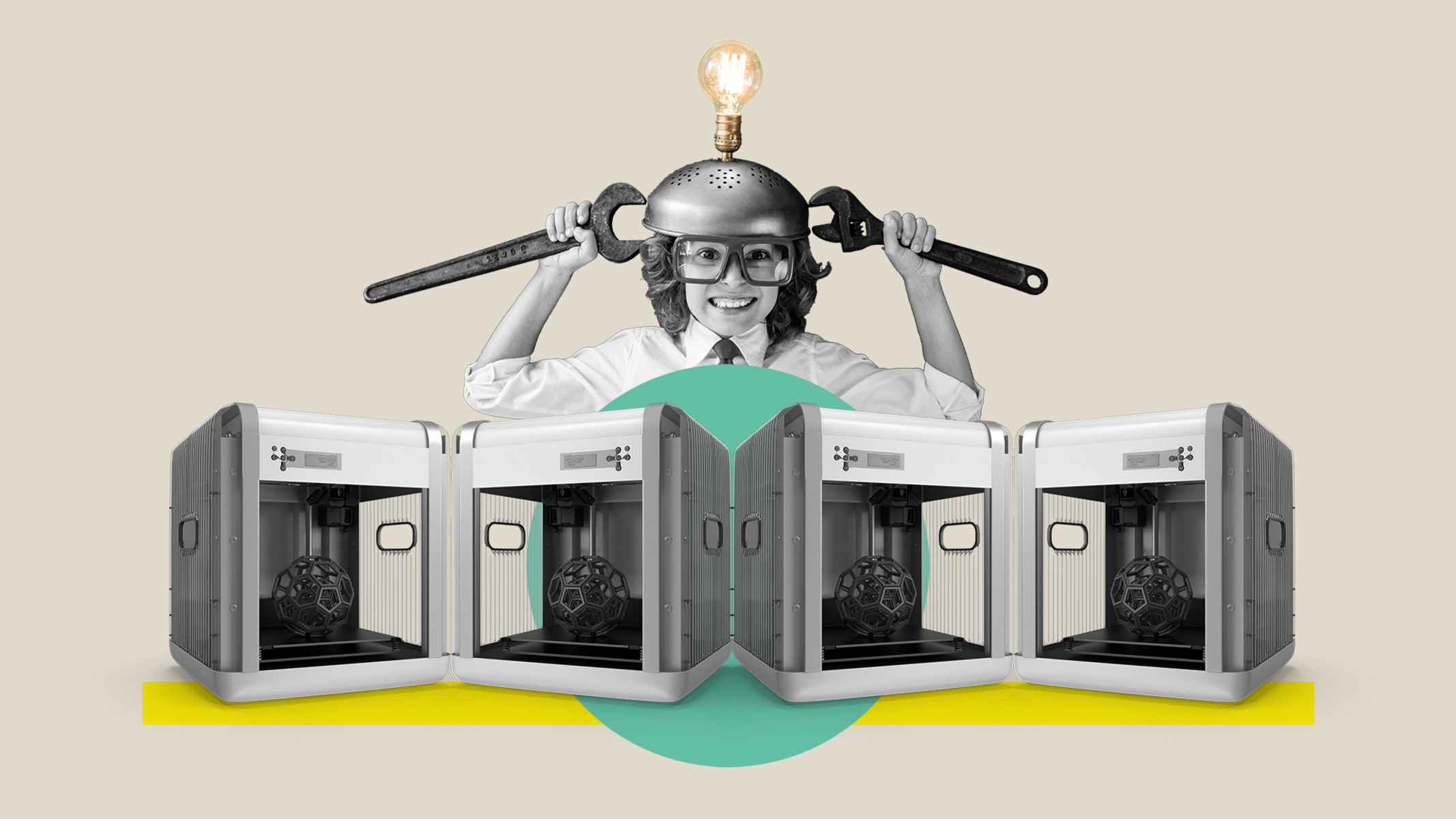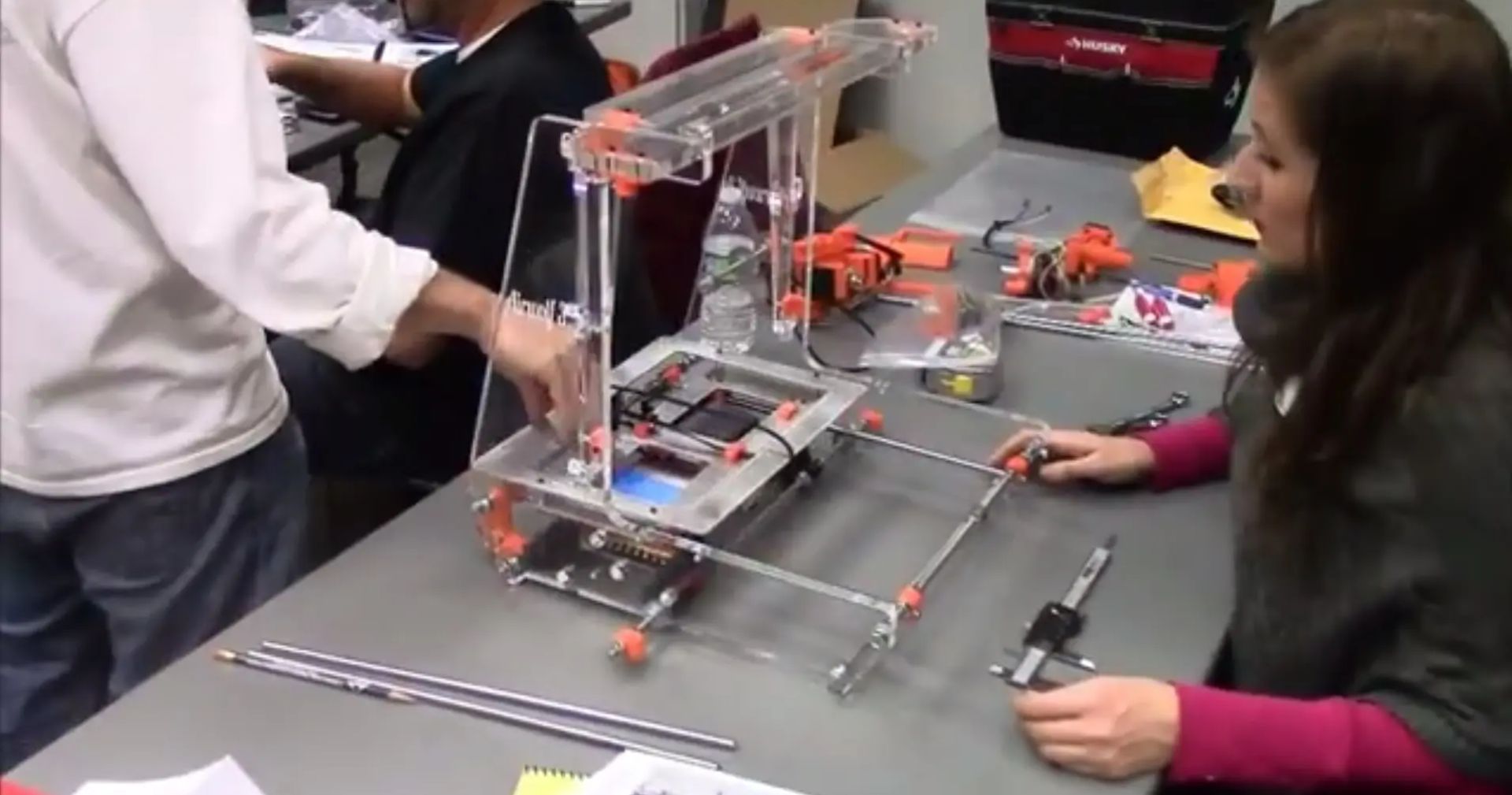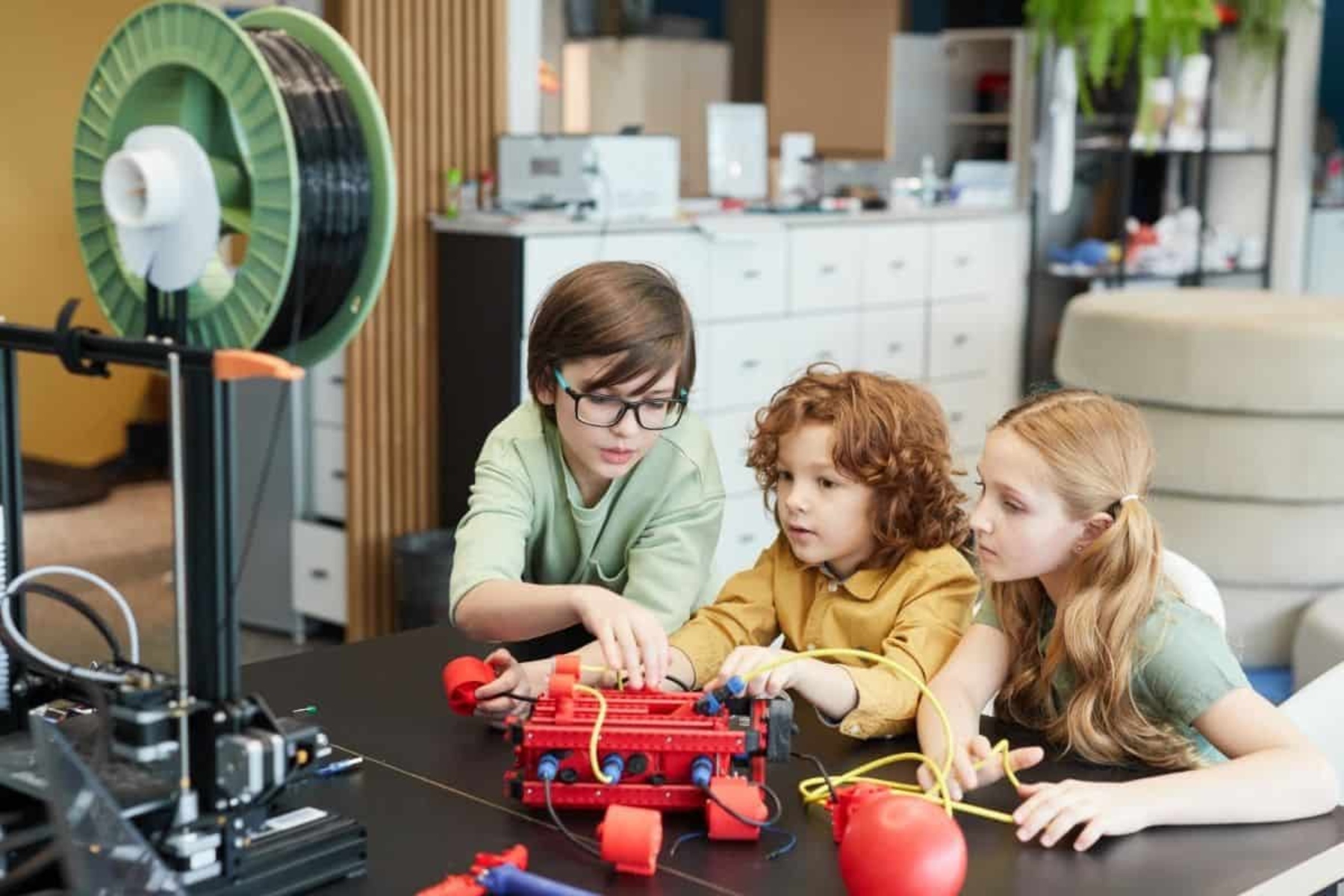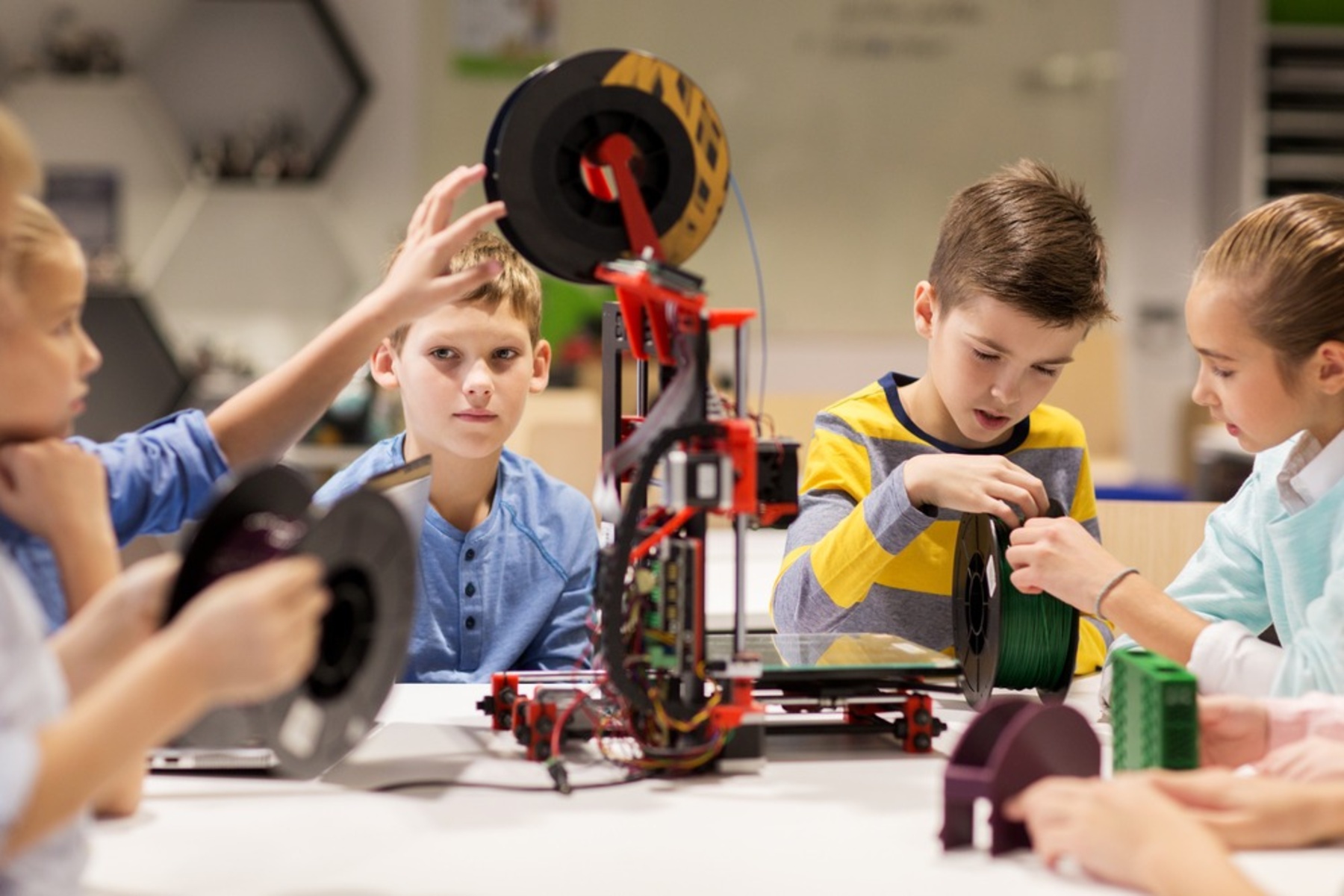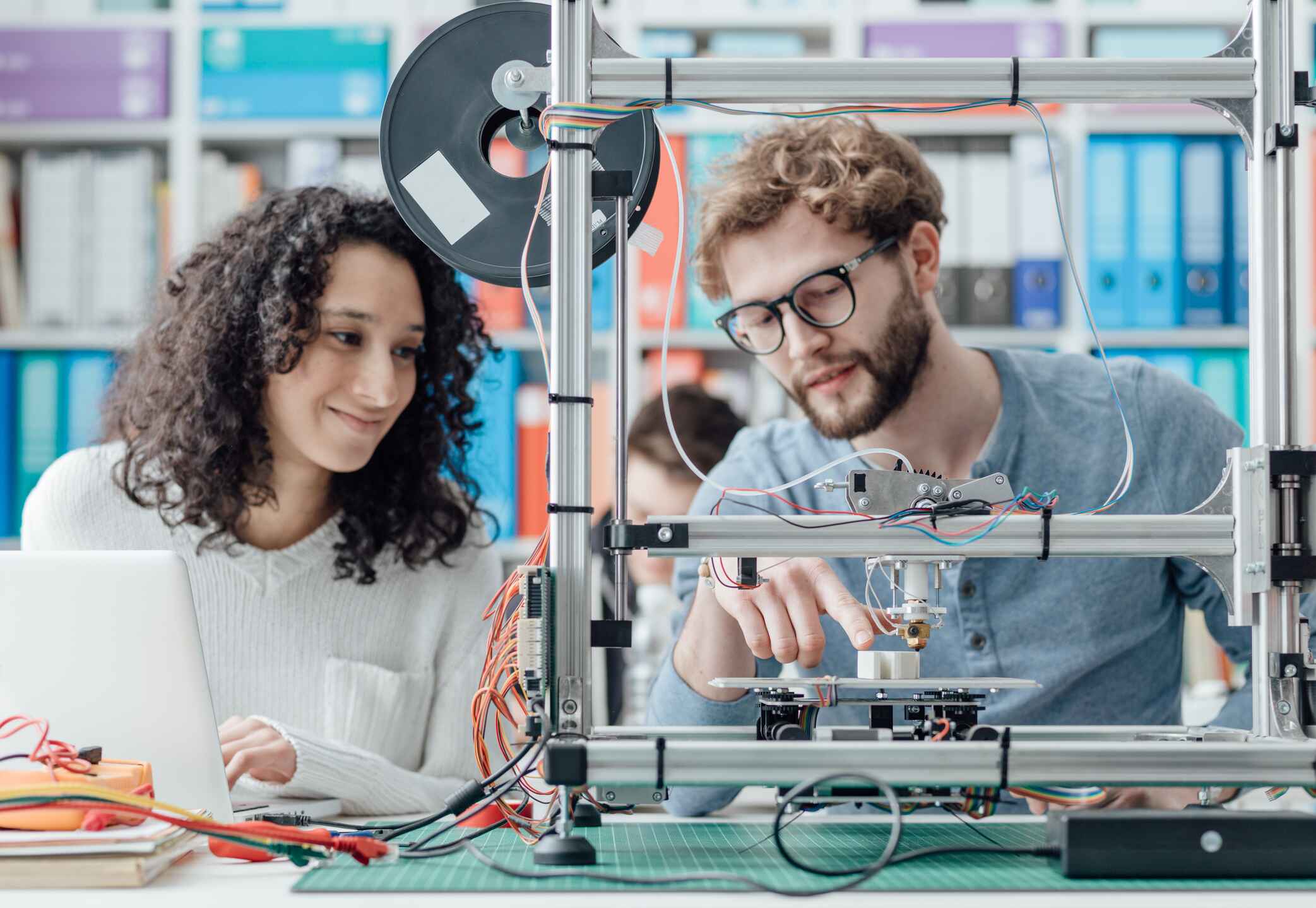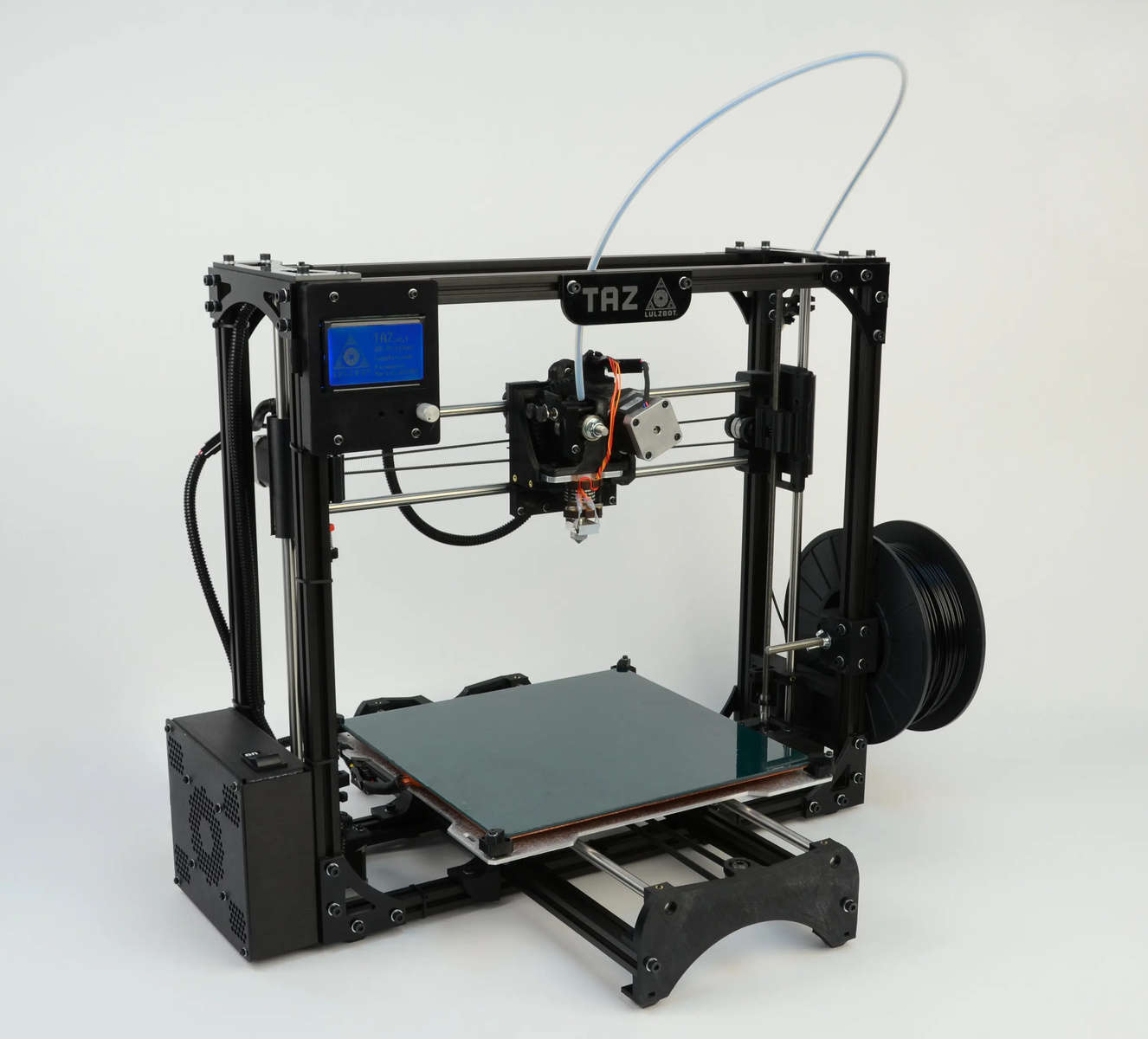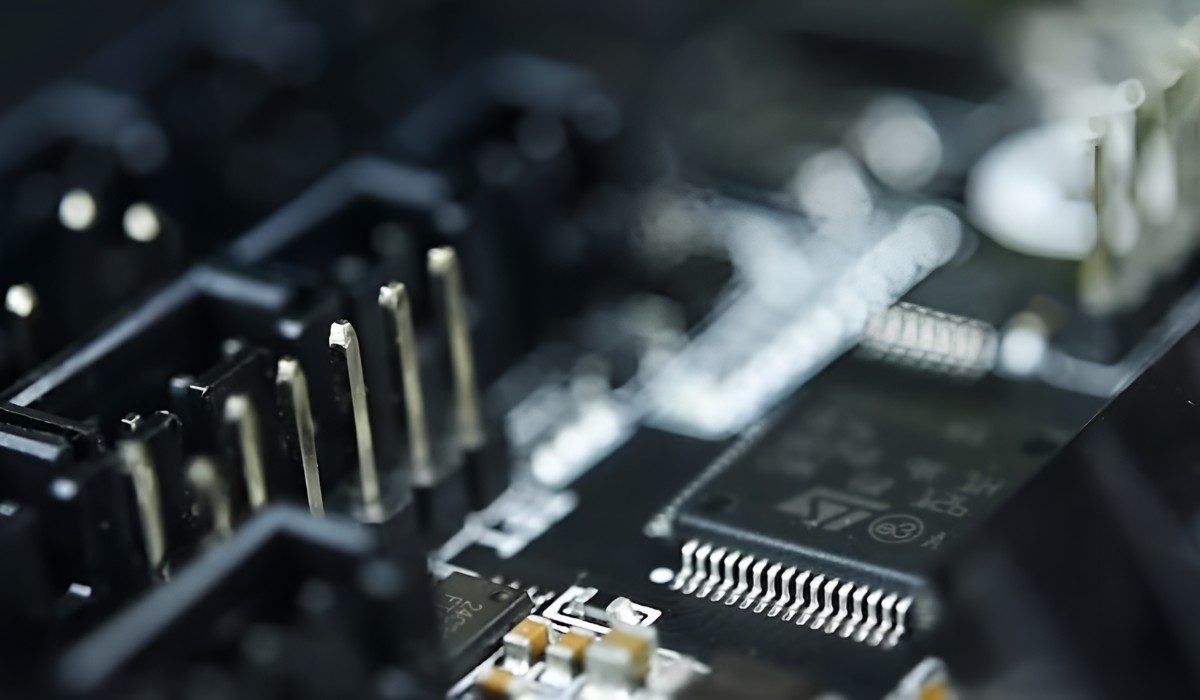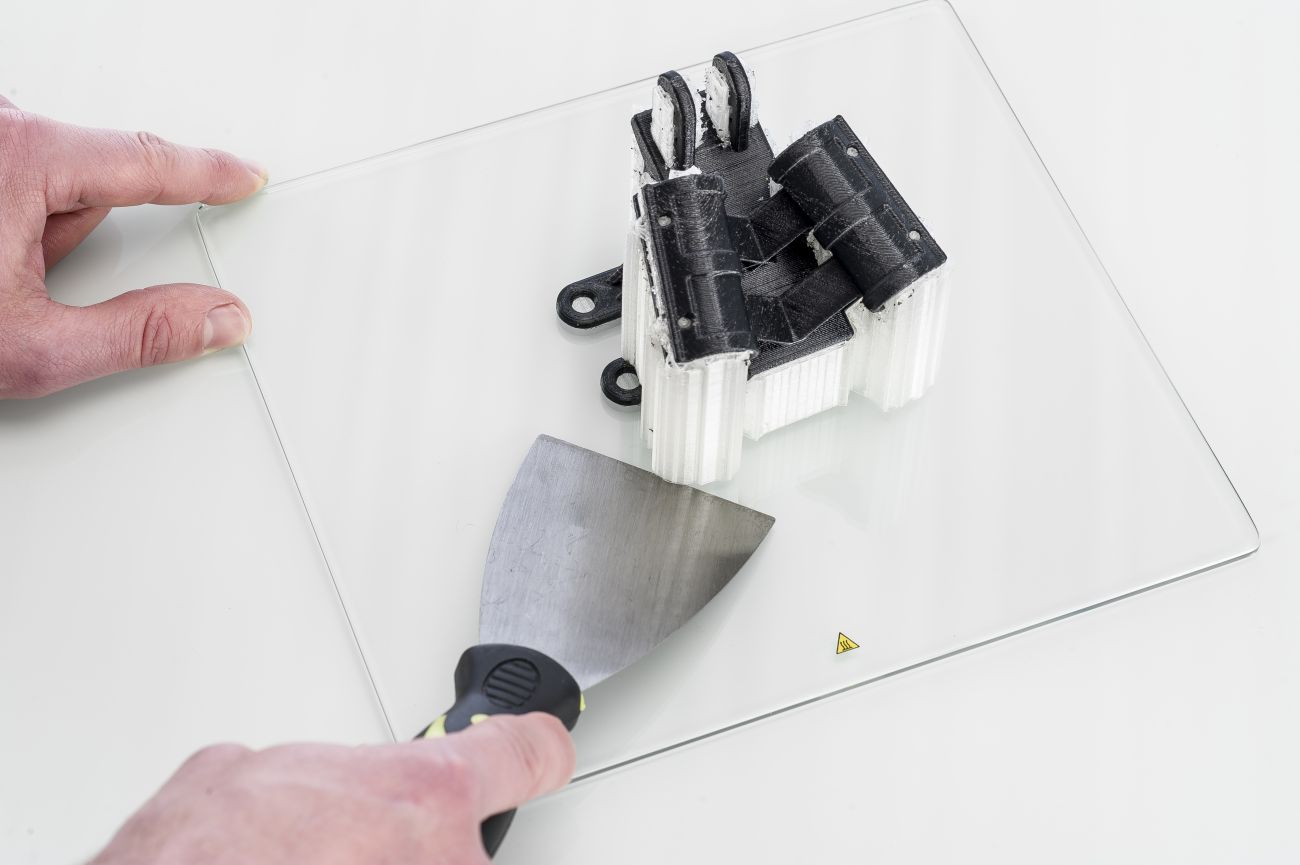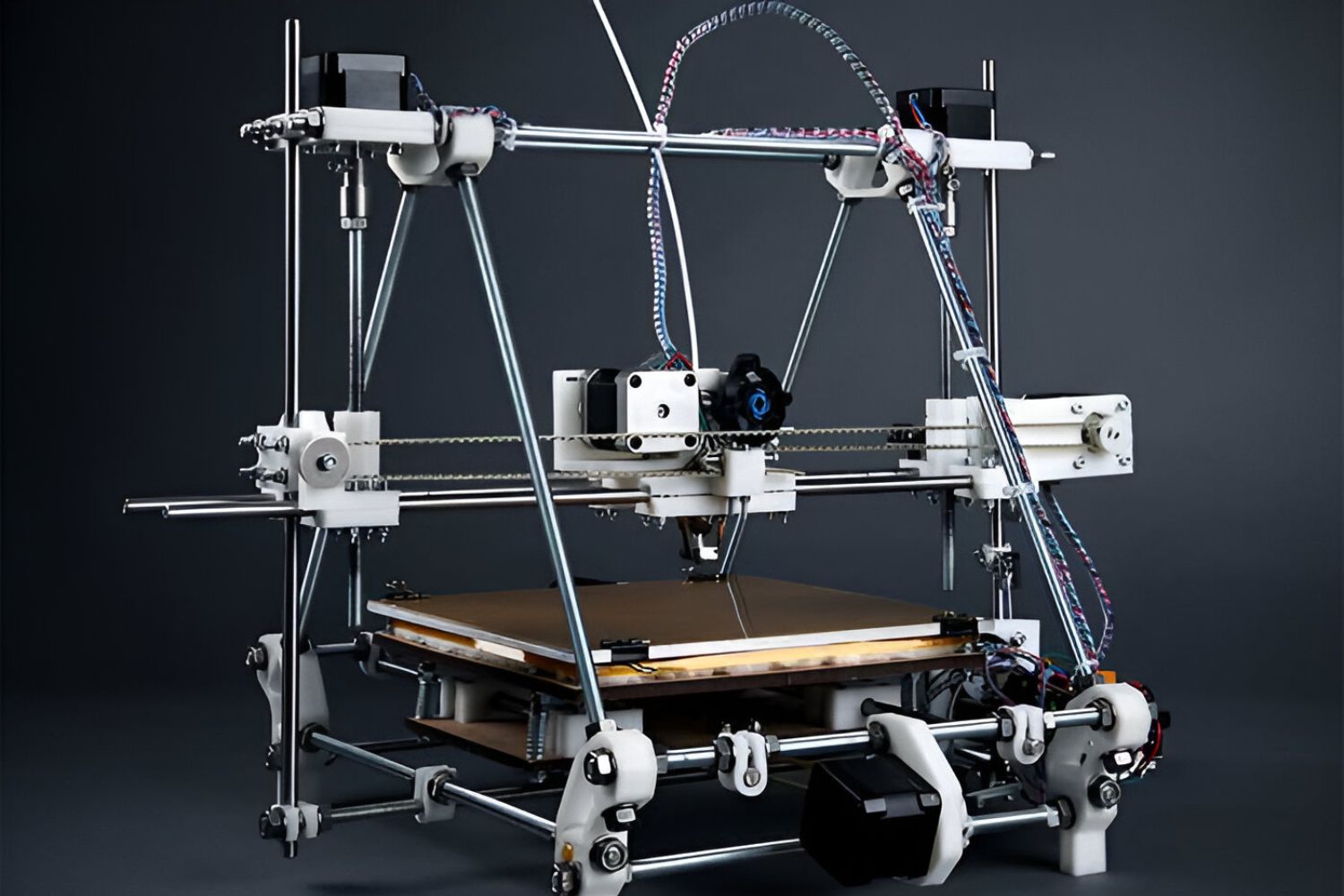Introduction
3D printing, also known as additive manufacturing, is revolutionizing various industries by offering innovative solutions to a wide range of problems. This transformative technology allows for the creation of three-dimensional objects by layering materials based on a digital model. With its ability to produce complex structures quickly and accurately, 3D printing has gained popularity and is increasingly being adopted across industries.
From manufacturing to healthcare, architecture to fashion, 3D printing is making a significant impact by providing unique advantages that traditional manufacturing methods cannot match. In this article, we will explore the problems that 3D printing solves and how it is transforming the way we approach design, production, and problem-solving.
By understanding the benefits and capabilities of 3D printing, we can gain insight into the possibilities it offers for various industries and areas of life. Let’s dive in and explore how this technology is reshaping the world around us.
Cost
One of the significant problems that 3D printing solves is the cost associated with traditional manufacturing processes. Traditional manufacturing often involves expensive tooling, molds, and machines that need to be created or purchased upfront. These costs can be prohibitive for small businesses or individuals looking to bring a product to market.
With 3D printing, the cost of production is significantly reduced. It eliminates the need for tooling and molds, as objects are created layer by layer directly from a digital model. This reduces material waste and eliminates the need for complex manufacturing processes. As a result, the overall production cost is substantially lower, making it more accessible for entrepreneurs, startups, and small-scale production.
Additionally, 3D printing allows for cost-effective customization. Traditionally, customization meant higher costs due to the need for creating unique molds or tooling. However, with 3D printing, customization is as easy as tweaking the digital model before printing. This enables businesses to offer personalized products without incurring significant additional expenses.
Furthermore, the ability to optimize designs and iterate quickly with 3D printing helps reduce costs associated with product development. Traditional manufacturing often involves multiple rounds of expensive prototyping, which can prolong the development process and increase costs. With 3D printing, designers can rapidly create prototypes and make necessary iterations at a fraction of the time and cost.
Overall, 3D printing offers a cost-effective solution by eliminating the need for expensive tooling, reducing material waste, enabling customization, and streamlining the product development process. This affordability allows for greater innovation, democratizes manufacturing, and creates new opportunities for businesses of all sizes.
Customization
One of the key advantages of 3D printing is its ability to deliver high levels of customization. Traditional mass production methods often struggle to accommodate individual needs and preferences, but 3D printing unlocks a new level of personalization.
With 3D printing, objects can be easily tailored to specific requirements. Whether it’s creating personalized jewelry, customized orthopedic implants, or unique architectural designs, 3D printing allows for intricate customization options that were previously unimaginable.
Unlike traditional manufacturing methods that rely on molds and fixed designs, 3D printing enables the production of one-of-a-kind or limited-edition products at a reasonable cost. This is particularly valuable for niche markets or when prototyping complex designs. For example, in the fashion industry, designers can create personalized garments that fit an individual’s body shape and style preferences.
Furthermore, the flexibility of 3D printing allows for on-demand manufacturing, enabling businesses to produce items only when they are needed. By eliminating the need for large inventory and costly storage, this approach minimizes waste and optimizes resources.
Another exciting aspect of customization with 3D printing is the ability to integrate personalized features directly into an object’s design. For instance, medical professionals can utilize patient-specific data to create customized prosthetics or dental aligners that perfectly match an individual’s unique anatomy.
Additionally, 3D printing empowers consumers to become co-creators in the design process. Through online platforms and specialized software, individuals can customize existing models or design their own objects, giving them a sense of ownership and creative expression.
Overall, 3D printing breaks the barriers of mass production by offering unparalleled customization options. From personalized products to individualized medical solutions, this technology opens up a world of creative possibilities for both businesses and consumers alike.
Time
Time is a critical factor in manufacturing processes, and 3D printing addresses various time-related challenges in remarkable ways. Traditional manufacturing methods often involve complex production processes and long lead times, but 3D printing offers significant advantages in terms of speed and efficiency.
One of the key benefits of 3D printing is its ability to accelerate the prototyping process. With traditional manufacturing, creating physical prototypes can be time-consuming, requiring the production of molds and tooling. These processes can result in delays and hinder design iterations. However, with 3D printing, designers can quickly transform digital models into physical prototypes, allowing for rapid iteration and faster validation of designs.
The speed of 3D printing also applies to small-scale production runs. While traditional manufacturing may require significant setup time, such as preparing molds or reconfiguring production lines, 3D printing enables the production of objects with minimal setup requirements. This allows for faster turnaround times, making it ideal for on-demand production scenarios or short-timeframe projects.
Additionally, 3D printing can optimize supply chain management by reducing lead times for parts and components. When businesses need specific parts for their products, they often have to rely on external suppliers who may have their own production schedules and lead times. However, with 3D printing, companies can produce these parts in-house, eliminating the need for long waiting times and potential disruptions in the supply chain.
Another time-saving aspect of 3D printing is the concurrent manufacturing of multiple components. Traditional manufacturing often requires the assembly of different parts produced separately. 3D printing enables the creation of complex objects as a single piece, eliminating the need for time-consuming assembly processes. This streamlines production and saves valuable time in the manufacturing process.
Overall, 3D printing offers significant time-saving advantages in product development, small-scale production, supply chain management, and the creation of complex objects. Its speed and efficiency make it a valuable tool in industries where time-to-market, iterative design processes, and on-demand production are crucial for success.
Efficiency
Efficiency is a key consideration in any manufacturing process, and 3D printing offers numerous efficiency improvements over traditional methods. With its unique layer-by-layer approach, 3D printing maximizes material usage, reduces waste, and enhances the overall production efficiency.
One of the primary efficiency benefits of 3D printing is the reduction in material waste. Traditional manufacturing often involves subtractive processes where excess material is cut away, resulting in significant waste. In contrast, 3D printing is an additive process, meaning materials are deposited only where they are needed. This precise material deposition minimizes waste, resulting in material savings and cost reduction.
Furthermore, 3D printing enables the production of complex geometries that may be difficult or impossible to achieve using traditional manufacturing methods. This ability to create intricate designs with internal structures and hollow parts optimizes the use of materials. For example, in the aerospace industry, 3D printing is used to produce lightweight components with complex internal lattice structures, reducing weight and improving fuel efficiency.
The efficiency of manufacturing processes is also enhanced by 3D printing’s ability to integrate multiple components into a single printed object. Traditional manufacturing often requires assembly of different parts, which can be time-consuming and prone to errors. With 3D printing, complex objects with integrated features, such as hinges or moving parts, can be created in a single printing process. This simplifies assembly, reduces the number of components, and improves the overall efficiency of the production process.
Additionally, 3D printing eliminates the need for tooling changes or reconfiguration when switching between different product designs. In traditional manufacturing, changing production setups can result in downtime and production delays. With 3D printing, manufacturers can simply adjust the digital model and quickly switch to producing a different design without the need for any physical modifications or retooling. This agility and flexibility improve manufacturing efficiency and responsiveness to market demands.
Overall, 3D printing offers significant efficiency improvements through reduced material waste, optimized design capabilities, simplified assembly processes, and increased agility in production setup changes. These efficiency gains contribute to cost savings, improved resource utilization, and streamlined manufacturing operations.
Waste Reduction
Waste reduction is a critical concern in today’s world, and 3D printing offers significant advantages in minimizing waste during the manufacturing process. Unlike traditional manufacturing methods that often generate substantial amounts of waste, 3D printing is inherently more sustainable by limiting material usage and minimizing post-production waste.
One of the key ways 3D printing reduces waste is through its additive manufacturing process. Traditional manufacturing involves subtractive processes where excess material is cut away, leading to significant material waste. In contrast, 3D printing builds objects layer by layer, using only the necessary amount of material. This additive approach significantly reduces waste generation, making it a more sustainable manufacturing method.
Furthermore, 3D printing allows for the optimization of object designs to further reduce material usage. Designers and engineers can create lightweight structures with internal cavities or lattices that maintain strength while minimizing material requirements. By precisely controlling the deposition of material, 3D printing enables the production of efficient, lightweight components that still meet performance requirements.
Another aspect in which 3D printing reduces waste is in the use of recycled or biodegradable materials. Some 3D printing technologies allow for the use of recycled plastics or materials derived from renewable sources. By utilizing these sustainable materials, 3D printing contributes to waste reduction and promotes environmental responsibility.
In traditional manufacturing, post-production waste is often generated through the removal of excess material or the need for finishing processes. 3D printing minimizes post-production waste by producing objects with high accuracy, reducing the need for extensive finishing processes. This not only saves time and resources but also decreases the amount of waste generated during the production process.
Additionally, 3D printing enables on-demand and customized production, which reduces waste associated with excess inventory. With traditional manufacturing, companies must predict demand and produce large quantities of items in advance. This often results in overproduction and the need for storage, leading to waste if the products do not sell. 3D printing allows for efficient production based on actual demand, minimizing excess inventory and associated waste.
Overall, 3D printing plays a significant role in waste reduction through its additive manufacturing process, lightweight design capabilities, use of recycled materials, and efficient on-demand production. By minimizing material waste and post-production waste, 3D printing promotes sustainability and environmental consciousness in manufacturing processes.
Complexity
3D printing has the unique ability to tackle complex design challenges that traditional manufacturing methods often struggle to overcome. The additive nature of 3D printing allows for the creation of intricate geometries, internal structures, and complex shapes that would be difficult or impossible to achieve using conventional manufacturing techniques.
With 3D printing, designers have the freedom to create complex objects without the limitations posed by traditional manufacturing processes. This enables the production of highly customized designs and intricate details that enhance the functionality and aesthetics of the final product.
One area where 3D printing excels in addressing complexity is in the medical field. Surgeons can leverage 3D printing technology to produce patient-specific implants or prosthetics that precisely match an individual’s unique anatomy. This level of customization ensures a better fit and improved patient outcomes, particularly in challenging cases where off-the-shelf solutions may not be suitable.
Moreover, 3D printing enhances the production of objects with internal structures or complex geometries. Traditional manufacturing methods often struggle to create such objects due to the limitations of tooling or machining processes. In contrast, 3D printing can produce complex designs as a single piece, eliminating the need for assembly and enabling the production of objects with functional internal features or moving parts.
In the aerospace and automotive industries, 3D printing is utilized to fabricate lightweight components with intricate lattice structures. These structures reduce weight while maintaining strength, resulting in more efficient and fuel-saving designs. The ability to integrate complex internal features or optimize structures for specific purposes offers unprecedented design possibilities and performance improvements.
Furthermore, 3D printing enables the production of objects with varying material properties within a single print. This makes it possible to create objects with gradients or composite structures, combining different materials with distinct characteristics. These capabilities allow for the fabrication of advanced and multifunctional components that were previously difficult to achieve with traditional manufacturing methods.
Overall, 3D printing empowers designers and engineers to overcome the limitations of complexity in manufacturing. By providing the tools to create intricate designs, internal structures, personalized solutions, and multifunctional objects, 3D printing unlocks a new realm of possibilities and innovation across various industries.
Accessibility
One of the significant advantages of 3D printing is its potential to enhance accessibility in various aspects of manufacturing and design. This technology has the power to democratize production and provide opportunities for individuals and businesses that may not have access to traditional manufacturing processes.
One key aspect of accessibility is the reduced barriers to entry for entrepreneurs, startups, and small businesses. Traditional manufacturing often requires substantial upfront investment in tooling, machinery, and production facilities. This can be a significant financial burden, particularly for those just starting or operating with limited resources. In contrast, 3D printing offers a more affordable and accessible alternative, with lower setup costs and the ability to produce small volumes or customized products on-demand.
Moreover, 3D printing allows for localized production, reducing the dependency on global supply chains for certain products. This access to local production capabilities can be particularly advantageous for remote or underserved communities. They can leverage 3D printing technology to produce essential items, prototypes, or customized solutions without relying on distant suppliers or facing logistical challenges.
The accessibility of 3D printing also extends to education and innovation. Educational institutions at all levels now have the opportunity to introduce students to this technology, enhancing their understanding of design principles, manufacturing processes, and problem-solving skills. Students can gain hands-on experience with 3D printers, encouraging creativity, collaboration, and the exploration of new ideas.
Furthermore, 3D printing encourages innovation by enabling rapid prototyping and iteration. Designers and inventors can quickly translate their ideas into physical objects, test their functionality, and make necessary refinements. This promotes a more agile and iterative design process, accelerating the pace of innovation and enabling individuals to bring their concepts to fruition more efficiently.
Accessibility is also enhanced through online platforms and communities that provide access to shared knowledge, resources, and ready-to-print designs. These platforms enable individuals to collaborate, share ideas, and access a vast library of printable objects. By connecting people around the world and providing a space for exchange, 3D printing fosters a culture of inclusivity and accessibility to information and designs.
Overall, 3D printing promotes accessibility by lowering entry barriers, enabling localized production, empowering education and innovation, and fostering collaboration through online platforms. This technology opens up opportunities for individuals, communities, and businesses to participate in manufacturing, design, and problem-solving processes that were once out of reach.
Sustainability
3D printing offers significant sustainability benefits that contribute to a more environmentally friendly and resource-efficient approach to manufacturing. From reducing material waste to minimizing energy consumption, this technology plays a vital role in promoting sustainable practices.
One of the key sustainability advantages of 3D printing is its ability to minimize material waste. Unlike traditional manufacturing methods that often involve subtractive processes, 3D printing is an additive process that uses only the necessary amount of material. This eliminates the need for excess material and reduces waste generation. Additionally, 3D printing enables the possibility of using recycled materials or biodegradable filaments, further reducing environmental impact.
Furthermore, 3D printing allows for the optimization of designs to reduce weight and material usage. Lightweight structures with internal geometries or lattice patterns can be created, providing strength and functionality while minimizing the amount of material required. This leads to resource efficiency and energy savings, particularly in industries where weight reduction is crucial, such as aerospace or automotive.
Energy consumption is another area where 3D printing excels in sustainability. Unlike traditional manufacturing processes that require extensive machinery and equipment running continuously, 3D printers consume significantly less energy. They only consume power during the printing process, resulting in reduced energy usage and greenhouse gas emissions. Additionally, since 3D printing enables localized production, the energy and emissions associated with transportation and global supply chains can be also minimized.
In terms of supply chain sustainability, 3D printing reduces the need for transportation and long-distance logistics. With traditional manufacturing, products often travel long distances, contributing to carbon emissions and environmental impact. 3D printing allows for on-demand production, enabling businesses to produce objects closer to the point of use, reducing transportation emissions and promoting a more sustainable supply chain.
Moreover, 3D printing promotes product longevity and circular economy principles. When products break or wear out, 3D printing can be employed to replace specific parts, extending the lifespan of the object and reducing the need for complete replacement. This reduces waste generation and supports a more sustainable approach to consumption and resource management.
Additionally, 3D printing lends itself to localized and distributed manufacturing, which reduces the carbon footprint associated with global shipping and the associated environmental costs. By enabling production closer to the point of consumption, 3D printing reduces the need for long-distance transportation, thereby minimizing greenhouse gas emissions and lowering environmental impact.
Overall, 3D printing promotes sustainability through reduced material waste, energy efficiency, localized production, and support of circular economy principles. This technology plays a valuable role in addressing environmental concerns and driving more sustainable practices in manufacturing and design.
Innovation
3D printing has emerged as a catalyst for innovation across various industries, revolutionizing the way products are designed, manufactured, and brought to market. This technology offers unprecedented opportunities for creativity, problem-solving, and pushing the boundaries of what is possible.
One of the key aspects of innovation with 3D printing is the freedom it provides for design and customization. Designers and engineers are no longer limited by the constraints of traditional manufacturing methods, allowing them to unleash their creativity and explore new design possibilities. The ability to create complex geometries, intricate details, and personalized products drives innovation in fields such as fashion, architecture, healthcare, and more.
Moreover, 3D printing makes rapid prototyping and iteration more accessible, enabling quicker validation of ideas and design improvements. Traditional manufacturing usually involves long lead times and high costs for prototyping, which can hinder innovation. With 3D printing, designs can be translated into physical prototypes rapidly, facilitating a more iterative and agile design process. This accelerated timeline encourages experimentation, risk-taking, and iterative refinement, leading to innovation and improved product development.
Another significant innovation driver is the ability of 3D printing to integrate multiple functions and complex internal structures into a single object. This opens up new possibilities for creating multifunctional components with enhanced performance and capabilities. For example, in the medical field, 3D printing enables the production of implants with internal channels for drug delivery or prosthetics with integrated sensors, enhancing patient care and treatment outcomes.
Additionally, 3D printing promotes innovation through its potential to disrupt traditional supply chains. Localized production using 3D printers eliminates the need for large-scale manufacturing facilities and reduces dependence on global suppliers. This decentralization allows for more flexible and responsive production, especially in times of supply chain disruptions. It also encourages innovation hubs and localized manufacturing ecosystems, fostering collaboration, and driving innovation at the local level.
Furthermore, 3D printing encourages open-source sharing of designs, expanding the collaborative aspect of innovation. Online platforms and communities provide opportunities for designers, engineers, and enthusiasts to share their ideas, designs, and knowledge. This collaborative approach stimulates innovation through crowdsourcing, feedback, and collective problem-solving, leading to advancements and breakthroughs in various fields.
Overall, 3D printing fuels innovation through its design freedom, rapid prototyping capabilities, integration of multiple functions, disruption of supply chains, and collaborative nature. This technology empowers individuals, businesses, and industries to embrace creativity, break through traditional limitations, and pioneer new ideas and solutions.







